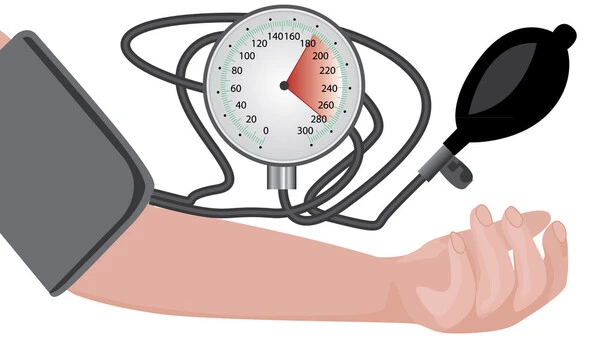Regular physical activity and exercise can partially offset the negative impact of high blood pressure on your health. Exercise can help lower blood pressure by improving the health and flexibility of your blood vessels, which can help blood flow more easily and reduce the pressure on your arteries. Exercise also helps strengthen the heart muscle, which can help it pump blood more efficiently.
According to a 29-year study published in the European Journal of Preventive Cardiology, an ESC journal, high fitness levels may reduce the risk of death from cardiovascular disease in men with high blood pressure.
“This was the first study to look at the combined effects of fitness and blood pressure on the risk of dying from cardiovascular disease,” study author Professor Jari Laukkanen of the University of Eastern Finland in Kuopio, Finland, said. “The findings suggest that physical activity may help protect against some of the negative effects of high blood pressure.”
High blood pressure affects nearly 1.3 billion adults aged 30 to 79 worldwide (hypertension). Hypertension is a major risk factor for heart attack and stroke, as well as a leading cause of death worldwide. Previous research has linked increased cardiorespiratory fitness to increased longevity. This study looked at the relationship between blood pressure, fitness, and the risk of dying from cardiovascular disease.
Controlling blood pressure should remain a priority for those who have it. According to our findings, men with high blood pressure should strive to improve their fitness levels through regular physical activity.
Professor Laukkanen
The study included 2,280 men aged 42 to 61 years living in eastern Finland and enrolled in the Kuopio Ischaemic Heart Disease Risk Factor Study. Baseline measurements were conducted between 1984 and 1989. These included blood pressure and cardiorespiratory fitness, which was assessed as maximal oxygen uptake while riding a stationary bicycle. Blood pressure was classified as normal or high, and fitness was classified as low, medium or high.
At the time of the baseline, the average age was 53 years. Participants were tracked until 2018. There were 644 deaths from cardiovascular disease during a median follow-up of 29 years. After adjusting for age, BMI, cholesterol levels, smoking status, type 2 diabetes, coronary heart disease, use of antihypertensive medication, alcohol consumption, physical activity, socioeconomic status, and high sensitivity C-reactive protein, the risk of death from cardiovascular disease was examined (a marker of inflammation).
Considering blood pressure alone, compared to normal values, high blood pressure was associated with a 39% increased risk of cardiovascular mortality (hazard ratio [HR] 1.39; 95% confidence interval [CI] 1.17-1.63). Considering fitness alone, compared with high levels, low fitness was associated with a 74% elevated likelihood of cardiovascular death (HR 1.74; 95% CI 1.35-2.23).

Participants were divided into four groups to assess the joint associations of blood pressure and fitness with the risk of cardiovascular death: 1) normal blood pressure and high fitness (the comparison group); 2) normal blood pressure and low fitness; 3) high blood pressure and high fitness; and 4) high blood pressure and low fitness.
Men with high blood pressure and low fitness had a risk of cardiovascular death that was more than double that of men with normal blood pressure and high fitness (HR 2.35; 95% CI 1.81-3.04). When men with high blood pressure and high fitness levels had high fitness levels, their elevated risk of cardiovascular risk remained but was weaker: it was 55% higher than those with normal blood pressure and high fitness (HR 1.55; 95% CI 1.16-2.07).
Professor Laukkanen said: “Both high blood pressure and low fitness levels were each associated with an increased risk of cardiovascular death. High fitness levels attenuated, but did not eliminate, the increased risk of cardiovascular mortality in men with elevated blood pressure.”
The paper states: The inability of cardiorespiratory fitness to completely eliminate the risk of cardiovascular mortality in those with high blood pressure could partly be due to the strong, independent, and causal relationship between blood pressure and cardiovascular disease.
Professor Laukkanen came to the following conclusion: “Controlling blood pressure should remain a priority for those who have it. According to our findings, men with high blood pressure should strive to improve their fitness levels through regular physical activity. Aside from regular exercise, avoiding excess body weight may improve fitness.”
To reduce all-cause death, cardiovascular death, and illness, ESC guidelines recommend that adults of all ages strive for at least 150 to 300 minutes per week of moderate-intensity aerobic physical activity or 75 to 150 minutes per week of vigorous-intensity aerobic physical activity or an equivalent combination.





